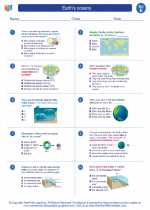Sand Dunes
Sand dunes are natural formations of wind-blown sand that are found in deserts, along coastlines, and in some inland areas. They are formed through the process of erosion, transportation, and deposition of sand particles by the wind.
Formation
1. Erosion: Sand dunes are formed from loose sand particles that are eroded from rocks, cliffs, and other landforms by the action of wind and water.
2. Transportation: Once the sand particles are eroded, they are carried by the wind, often in the direction of prevailing winds.
3. Deposition: When the wind loses its energy, it drops the sand particles, leading to the formation of sand dunes.
Types of Sand Dunes
There are different types of sand dunes based on their shapes and formation. The main types include:
- Barchan Dunes: Crescent-shaped dunes with the tips pointing downwind.
- Transverse Dunes: Long ridges of sand that form perpendicular to the wind direction.
- Star Dunes: Complex dunes with multiple ridges and arms, often found in areas with shifting wind directions.
- Parabolic Dunes: U-shaped dunes with the tips pointing upwind, often found in coastal areas.
Importance of Sand Dunes
Sand dunes play important roles in the ecosystem and human activities, including:
- Protection of coastal areas from erosion and storm surges.
- Providing habitats for specialized plant and animal species.
- Being popular destinations for recreational activities such as sandboarding and dune bashing.
Study Guide
To study and understand sand dunes, consider the following key points:
- Learn about the formation process of sand dunes and the factors that influence their development.
- Understand the different types of sand dunes and their unique characteristics.
- Explore the ecological importance of sand dunes and their impact on coastal environments.
- Examine the human activities associated with sand dunes and their potential impacts on the ecosystem.
By studying these aspects, you can gain a comprehensive understanding of sand dunes and their significance in the natural world.
[Sand Dunes] Related Worksheets and Study Guides:
.◂Science Worksheets and Study Guides Fifth Grade. Earth's oceans

 Worksheet/Answer key
Worksheet/Answer key
 Worksheet/Answer key
Worksheet/Answer key
 Worksheet/Answer key
Worksheet/Answer key
 Vocabulary/Answer key
Vocabulary/Answer key
 Vocabulary/Answer key
Vocabulary/Answer key
